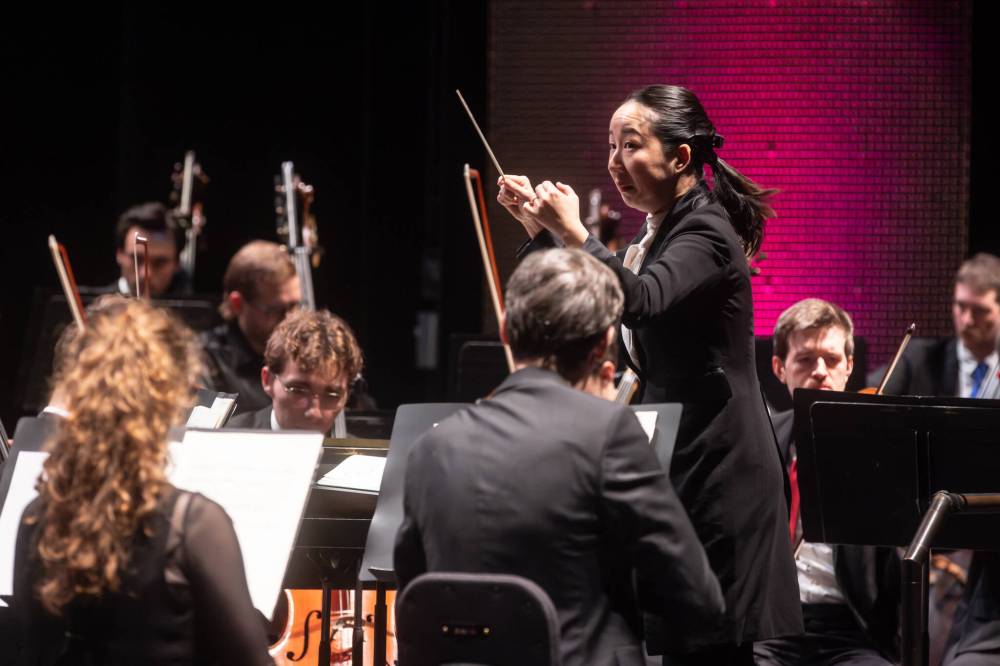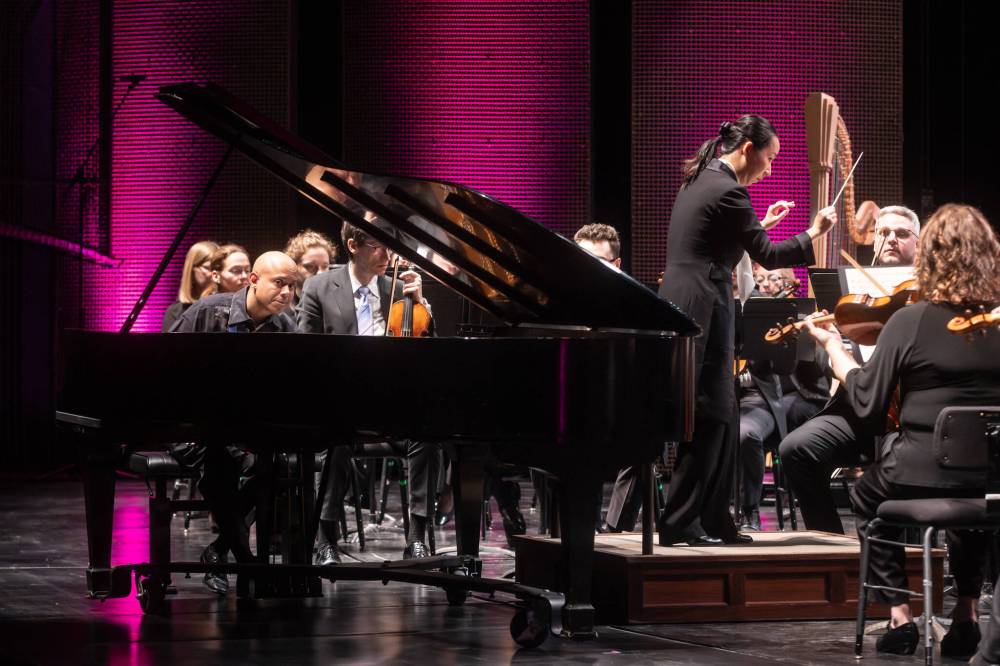French Masters rendered with fearless technical mastery
Advertisement
Read this article for free:
or
Already have an account? Log in here »
To continue reading, please subscribe:
Monthly Digital Subscription
$0 for the first 4 weeks*
- Enjoy unlimited reading on winnipegfreepress.com
- Read the E-Edition, our digital replica newspaper
- Access News Break, our award-winning app
- Play interactive puzzles
*No charge for 4 weeks then price increases to the regular rate of $19.00 plus GST every four weeks. Offer available to new and qualified returning subscribers only. Cancel any time.
Monthly Digital Subscription
$4.75/week*
- Enjoy unlimited reading on winnipegfreepress.com
- Read the E-Edition, our digital replica newspaper
- Access News Break, our award-winning app
- Play interactive puzzles
*Billed as $19 plus GST every four weeks. Cancel any time.
To continue reading, please subscribe:
Add Free Press access to your Brandon Sun subscription for only an additional
$1 for the first 4 weeks*
*Your next subscription payment will increase by $1.00 and you will be charged $16.99 plus GST for four weeks. After four weeks, your payment will increase to $23.99 plus GST every four weeks.
Read unlimited articles for free today:
or
Already have an account? Log in here »
The Winnipeg Symphony Orchestra put the ooh-la-la into its latest musical offering Thursday, as it presented French Masters, featuring a trio of works spanning 1847 to 1947.
The 89-minute (sans intermission) program also welcomed internationally acclaimed conductor Nodoka Okisawa to the podium. The multi-award winning maestra, who made her local debut here in 2023, is currently serving as the 14th chief conductor of the city of Kyoto, in addition to making guest appearances around the world.
It’s taken four years to once again witness the brilliant artistry of Canadian dynamo pianist Stewart Goodyear, who last wowed listeners on this stage in 2021. His latest performance of Ravel’s Piano Concerto for the Left Hand proved — lest there were any doubt — that nothing is out of hand for this virtuoso, renowned for his technical mastery and fearless approach to some of the solo piano canon’s most fiendishly difficult works.

Matt Duboff photo
Pianist Stewart Goodyear was especially masterful in Ravel’s Piano Concerto for the Left Hand.
The Ravel is among those, written in 1929-30 and dedicated to its first soloist, Paul Wittgenstein, for its Vienna Symphony Orchestra première in 1932. The Austrian-American concert pianist had tragically lost his right arm during the First World War and subsequently commissioned several composers, including Ravel, to create music he could play.
Hearing this astounding work performed live is one of the marvels of the classical music world. The soloist must not only render its melodic lines and accompaniment patterns with merely five hard-working digits, but also establish a new centre of gravity, with Goodyear holding his right hand on his lap as ballast throughout the roughly 18-minute performance.
Musicians are supreme athletes as well as thoroughbred artists; the pure physicality of bringing this work — or any of the piano left-hand repertoire — to life defies all logic.
The concerto itself begins in the double basses’ lugubrious depths, overlaid by an unusually scored contrabassoon solo, with Okisawa sensitively laying the foundation for the soloist’s first entry. Then Goodyear launched into his extended opening cadenza, immediately enthralling 701 listeners with punched-out block chords, supported by runs up and down his keyboard.
His muscular approach recalled his now legendary performances of all 32 Beethoven sonatas on a single day; it might, however, have eased more during the quieter, more lyrical and impressionistic passages.

Matt Duboff photo
For Poulenc’s Suite from Les biches, conductor Nodoka Okisawa maintained a taut rein.
In his final cadenza, Goodyear’s uppermost melodic tones rang like bells over more cascading arpeggiated figures. The maestra matched him note for note, leading to pungent dissonances and a final flourish from the soloist, who practically flew off his bench from the sheer physical exertion.
The icing on the proverbial cake would have been an encore, which, despite a rousing standing ovation, did not materialize. One can only hope this fearless artist will be back on this stage again — and soon.
The evening opened with the WSO première of Louise Farrenc’s Symphony No. 3 in G minor, Op. 36, (1847). The trailblazing composer/pianist led the charge for women, writing bold symphonic works during the 1840s. Not even being denied acceptance into the fabled Paris Conservatoire for composition studies — owing to gender discrimination — could thwart her passion or creativity, with her colleague Robert Schumann numbered among her greatest fans.
The four-movement work proved a revelation, its strong architecture allowing for dramatic contrasts between its soaring themes, including a series of buzzing trills in the strings first heard during the opening Adagio: Allegro, in turn juxtaposed with more delicate wind sections as counterfoil.
A highlight was the penultimate Scherzo, whipped off like there was no tomorrow, leading to a triumphant Finale: Allegro, and slower-paced Adagio cantabile, beginning with a deeply expressive clarinet solo.

Matt Duboff photo
The French Masters program featured the Winnipeg Symphony Orchestra, with pianist Stewart Goodyear, led by Nodoka Okisawa.
The program rounded out with another WSO debut, Poulenc’s Suite from Les biches,” a.k.a. The Does, extracted in 1947 from the composer’s 1924 ballet score created for the Ballets Russes.
Its five sections offer a compendium of neoclassical technique, with its first movement, Rondeau, propelled by sprightly winds with flashes of dissonance and good humour.
The Adagietto’s plaintive opening theme, interrupted by several declamatory outbursts, leads to the Rag: Mazurka, with Okisawa keeping a taut rein on its prismatic shifts of metre and mood before another sweeping Andantino.
The 19-minute performance was capped by a lighting-speed Finale, with the conductor once more driving her players hard towards the finish line.
It’s a rare day when an audience doesn’t automatically spring to its collective feet at the end of virtually any program. For once, and with relatively few exceptions, audience members remained firmly in their seats, perhaps still digesting Poulenc’s kaleidoscopic, often surrealistic score that, while appealing, seemed to leave many scratching their heads with a sense of “je ne sais pas.”

Matt Duboff photo
The French Masters program featured the Winnipeg Symphony Orchestra, with pianist Stewart Goodyear, led by Nodoka Okisawa.
holly.harris@shaw.ca

